Let’s face it: consistent funding is the lifeblood of nonprofit work – without it, we cannot create the impact we want in our communities; and from individual giving to foundation grants and everything in between, there are so many different ways to go about fundraising.
In this article, we’ve put together a collection of fundraising strategies for nonprofits so you can see the myriad of funding options and choose the ones that fit best for your organization. Let’s dive in by starting with the key principles to keep in mind when forming your fundraising strategy.
Key Fundraising Principles
We’ve picked four key principles that are at the heart of good fundraising. The essence of principle-driven fundraising is creating transparency, authentic gratitude, and strategic communication so that you can align your needs with donor values. When done right, this ensures sustained support and trust within your community.
1. Building Relationships With Donors
Donors that feel seen – and see their donations making a tangible impact – give higher amounts and give more frequently. The key is to build a genuine connection by establishing trust with transparent communication that shows how their money is making a difference.
Personalized communication at the donor-level looks like grateful acknowledgement of their support, updates on the progress of projects, and intentionally creating a sense of community among donors. Donors that feel connected are more loyal and that encourages sustained engagement.
2. Transparency And Accountability
In our CauseVox Giving Study we found that the #1 barrier for Gen Z donors is understanding where and how their donation will be used. While the younger generation is growing in generosity and demanding transparency, it is true for all donors that accountability is key. Regular financial reporting, updates on project milestones, and tools such as impact donation tiers are a great way to instill confidence in donors that their gift is making a real impact.
3. Aligning Fundraising With The Mission
Matching fundraising efforts with the core mission of your nonprofit is not just a strategic choice; it’s the compass that guides your organization toward its true north. Your fundraising activities should speak directly to your organization’s mission. That is why crafting compelling narratives that help the donor see their place in the story are so powerful. When individuals understand the impact of their own contributions and connect with your organization’s values, real and lasting partnerships are formed.
4. Choosing Your Strategy And Creating Your Fundraising Plan
As the saying goes, failing to plan is planning to fail! That is why selecting the right fundraising strategies and crafting a comprehensive plan for the year is imperative for your success. We recommend creating a fundraising calendar to keep you on track and organized in your efforts.
As you read through the different fundraising strategies below, remember there is no one size fits all for fundraising, so be honest with where you are at and what you think will work best for your organization in the new year.
Download our Fundraising Plan and Calendar Template:
Fundraising Strategies for Nonprofits
1. Individual Giving
Donation Pages
Donation pages stand as the digital frontline of individual giving, providing a seamless and accessible platform for supporters to contribute to the cause. In fact, 75% of donors are more likely to make a donation if the giving process is easy. Here are a few simple and effective ways to transform your donation page from a transactional tool to a strategic hub for building sustained support and nurturing ongoing connections with individual donors.
- Recurring gifts are essential for fostering long-term donor relationships. According to our 2023 Giving Study, 64% of donors expressed a desire for automated charitable giving. Enabling recurring contributions on donation pages streamlines the giving process for donors while providing the organization with a consistent and predictable income source.
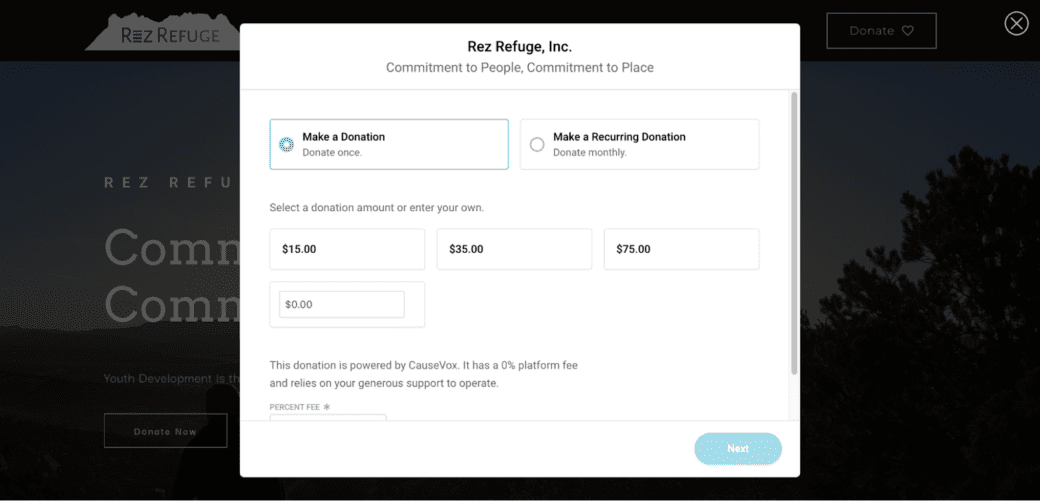
Raz Refuge uses a recurring donation option on their donation page.
- Donation tiers offer supporters distinct giving levels that correspond to varying levels of impact. Crafting well-defined donation tiers allows nonprofits to appeal to a diverse donor base, catering to varying financial capacities and motivations. You can structure donation tiers as impact-based or as recognition/reward based perks for your donors.
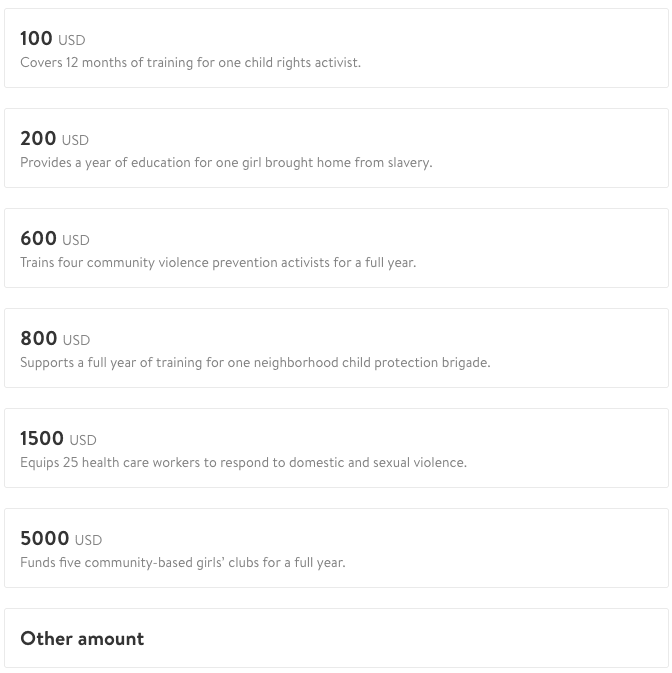
Differing donation tiers for varying levels of impact
Crowdfunding Campaigns
Crowdfunding campaigns leverage the power of community engagement and are an effective approach to individual giving. These campaigns harness collective enthusiasm and support to reach fundraising goals within a specified time frame. Within this strategy, annual giving campaigns are a prime example, rallying supporters around a shared cause for a set period.
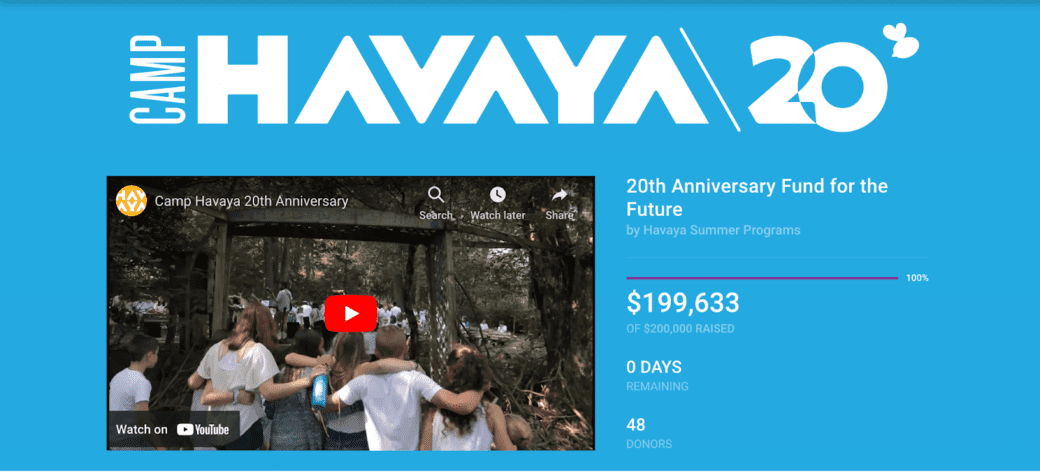
Annual Giving Campaign for Camp Havaya’s 20th Anniversary
Crowdfunding campaigns on fundraising platforms provide a visually compelling and interactive space for donors to track progress, fostering transparency and community spirit. By tapping into the collective generosity of a broad audience, nonprofits can achieve their financial targets while building a sense of shared purpose and unity among supporters.
Major Gifts And Donor Cultivation
Cultivating major gifts involves personalized engagement with potential high-impact donors, often through exclusive events, targeted communication and authentic relationship building. These relationships extend beyond transactional giving, aiming to establish a deep connection between the donor and the organization’s mission. An important bit of information we found is that 81% of high-income donors prioritize a quick donation process, which highlights how necessary a seamless donation page is for your nonprofits ongoing fundraising efforts.
We also discovered that 63% of donors would give larger and more frequent contributions if they had the option to pay over time. This underscores the value of introducing pledges on your donation page. Pledges enable donors to commit to specific amounts over a predefined period, fostering flexibility in giving and cultivating a sense of commitment and accountability.
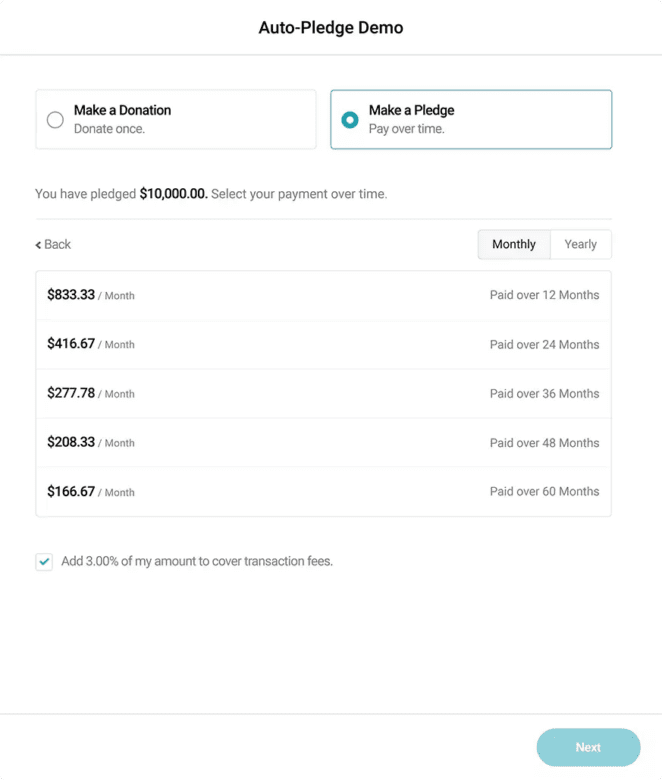
CauseVox Pledge Donation feature
Donor cultivation strategies focus on understanding donors’ interests and values, ensuring a meaningful alignment with the nonprofit’s goals. The aim is to create a symbiotic relationship where donors feel not only financially invested but emotionally connected to the cause. By prioritizing major gifts and effective donor cultivation, nonprofits can secure substantial support while building a community of dedicated advocates committed to the long-term success of the organization.
Fundraising Events

Use CauseVox Ticketing Integration for seamless events
Fundraising events provide a platform for face-to-face interactions with potential donors. They can include anything from galas to benefit concerts to trivia nights. These events not only raise funds but also serve as opportunities to engage with the community, build awareness, and strengthen the connection between the nonprofit and its supporters. They create opportunities for personal connections, allowing nonprofits to convey their mission directly and build meaningful relationships that may lead to significant contributions.
Peer-to-Peer Fundraising
Peer-to-peer fundraising empowers existing supporters to become advocates for the cause. By tapping into personal networks, nonprofits can broaden their reach and inspire new donors. And your donors want to help! In fact, we found that 71% of donors are open to assisting in fundraising activities for organizations they support. Engaging your current supporters in peer-to-peer fundraising is crucial as this approach relies on the principle that individuals are more likely to contribute when approached by someone they know and trust.
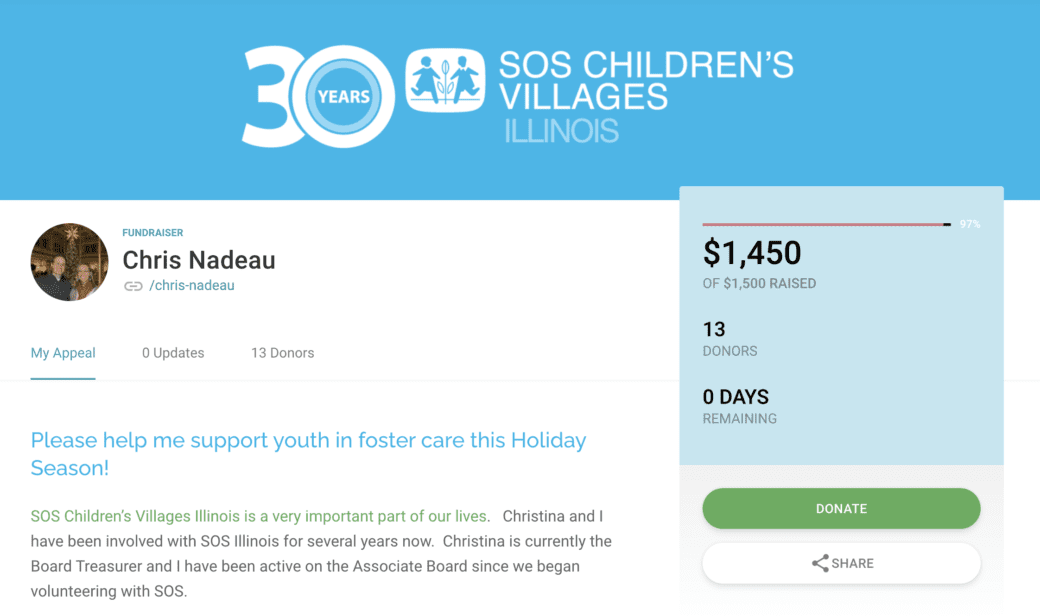
A peer-to-peer fundraising page that has garnered support from 13 new donors
2. Foundation Grants
Applying for grants serves as a robust funding strategy for nonprofits, offering access to substantial financial support from foundations that share a common commitment to advancing impactful initiatives and addressing societal challenges.
Identifying And Applying For Grants
A great place to identify potential grant opportunities are platforms like Insturmentl and Candid’s The Foundation Directory Online. While both platforms do require an upfront investment, they are invaluable in finding the best funding sources for your nonprofit.
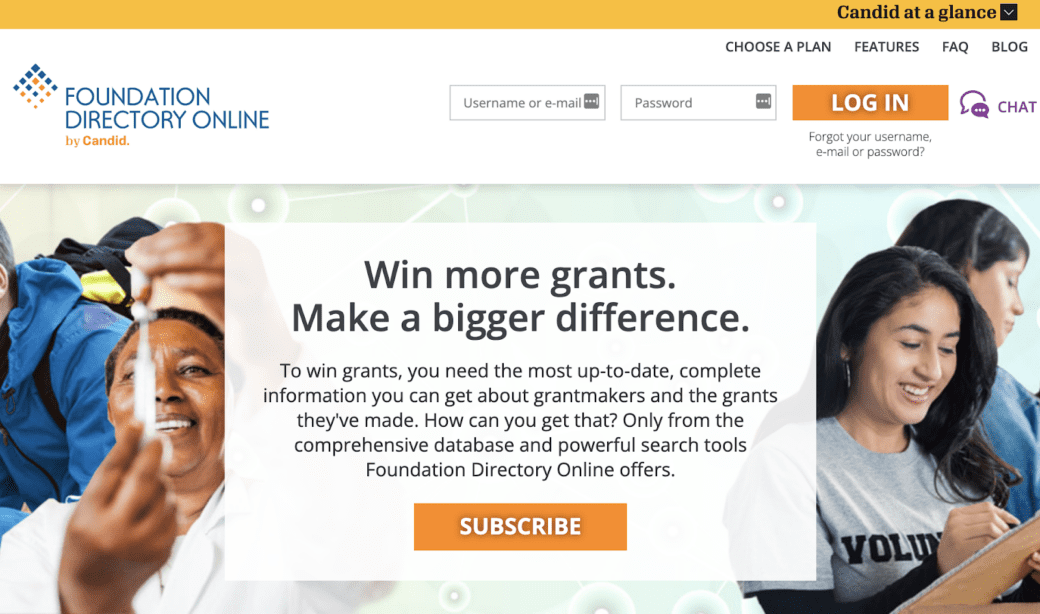
Candid’s Foundation Directory Online is a great tool for finding potential grants.
When applying for grants it is essential to read the entire application form and follow the guidelines. You can save a lot of time, energy and resources by only applying to grants where you fit the requirements. It is better to wait for the right opportunity than waste time applying for funding that doesn’t fit the funders’ guidelines.
Developing Strong Grant Proposals
Making a case for support is at the foundation of a strong grant proposal. Mixing both story and statistics will help you create a powerful proposal. Foundations are made of up people–just like nonprofits–and those deciding if you will be funded are moved by both facts and feeling. Employ both and don’t be afraid to let your passion shine through. Again, remember to follow the guidelines! Foundations receive countless proposals and those that do not follow the guidelines are the first to go.
Grant writing is a skill, and it’s also a full time job. If you are looking to apply for a large grant, or are not really sure where to start when crafting a proposal the first time, we would recommend hiring a grant writer. It is an upfront cost but the return on investment can be invaluable for your nonprofit. Consider using a grant management software to help with organization, administration and reporting.
Building Long-Term Relationships with Foundations
Just like with donors, relationships are key with foundations. In order to create and maintain strong relationships, get to know the funders. Keep up to date on your reporting, maintain transparency, and above all, be honest about your challenges and successes. Funders don’t expect your program to be perfect and they appreciate authenticity.
3. Corporate Partnerships
Corporate partnerships are a strategic avenue for nonprofits to amplify their impact and foster mutually beneficial relationships with the business sector. Beyond traditional fundraising, these partnerships offer unique opportunities, such as sponsorship programs, where corporations can directly support specific initiatives, events or services. Sponsorship not only provides financial backing for your organization but also enhances the visibility of the corporate partner.
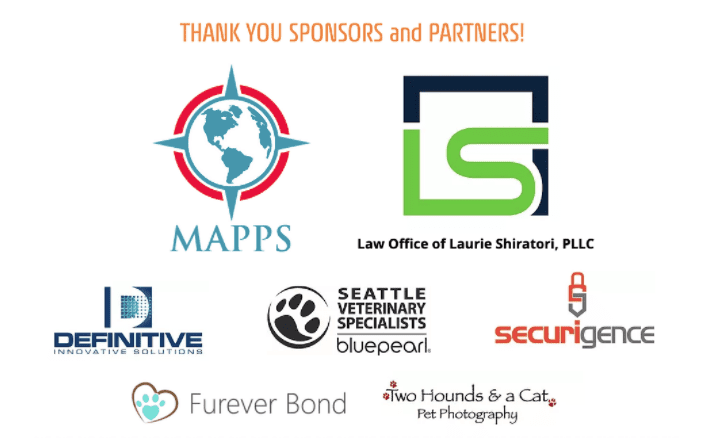
A way to include corporate sponsors on your campaign page or website.
Employee engagement programs are also a great opportunity to invite businesses to involve their workforce in volunteering, fundraising, or skill-sharing initiatives. These programs not only strengthen ties with the community but also instill a sense of purpose among employees.
By forging thoughtful collaborations and exploring opportunities such as sponsorships and employee engagement initiatives, nonprofits can tap into the corporate sector’s resources, expertise, and reach to advance their mission and drive positive change.
4. Planned Giving
Planned giving stands as a forward-thinking strategy that allows individuals to make a lasting impact on nonprofit organizations through thoughtful, long-term, and sometimes multi-year financial commitments. For those donors pledging gifts, whether big or small, we recommend a platform like Givzey that helps you send pledge agreements to donors both big and small and forecast your revenue more accurately for the coming years.
Legacy programs, a cornerstone of planned giving, enable donors to leave a lasting imprint on the organization by including it in their wills or estate plans. This ensures that their support continues to fuel the nonprofit’s mission well into the future.
Endowments, another vital aspect of planned giving, involve donors contributing investment funds with the understanding that only a portion of the investment’s earnings will be used annually, providing a perpetual source of income. By cultivating planned giving initiatives, nonprofits not only secure sustained financial support but also build a community of committed donors who leave a legacy of positive change, ensuring the organization’s resilience and impact endure for generations to come.

Youth Services utilized a planned giving/endowment campaign to help fund programs over the next 50 years.
Leveraging Technology In Fundraising
In the contemporary landscape of fundraising, technology serves as a dynamic catalyst, revolutionizing the way nonprofits connect with donors and amplify their impact.
Utilizing Social Media allows organizations to harness the expansive reach of platforms like Facebook, X (formerly Twitter), and Instagram to cultivate a broader audience, share compelling narratives, and mobilize support.
Online platforms, such as CauseVox, provide nonprofits with a streamlined and user-friendly avenue to launch and manage fundraising campaigns, offering donors a seamless and secure experience. There are other fantastic platforms for tools such as donor management systems that enhance efficiency by centralizing donor data, streamlining communication, and facilitating personalized engagement.

Causevox Campaign Page that raised over $400,000 with tons of peer-to-peer fundraising that enabled over 2000 people to give to Raising Hope Dogs.
You can also integrate data analytics for targeted campaigns. This empowers your nonprofit to glean insights into donor behavior, preferences, and trends, allowing for the strategic tailoring of campaigns for maximum impact.
By embracing these technological tools, nonprofits can navigate the digital landscape with agility, optimize their outreach, and forge deeper connections with supporters. With AI tools like ChatGPT writing emails, blogs, social media content and fundraising campaigns has gotten a whole lot easier. Of course it still needs your human touch and to be infused with the passion only you can provide, but utilizing these new tools can help you work smarter, not harder.
Overcoming Challenges in Nonprofit Fundraising
Nonprofit fundraising is not without its challenges, and addressing them head-on is crucial for sustained success. Economic uncertainties are constantly swirling around and this requires nonprofits to be adaptable and resourceful, especially during times of economic instability. This involves proactive financial planning, exploring alternative revenue streams, and maintaining fiscal prudence.
Adapting to changes in donor behavior is a constant necessity in the dynamic landscape of fundraising. Nonprofits must stay attuned to shifts in donor preferences and engagement patterns, adjusting their strategies accordingly to meet donors where they are.
Building resilience through funding diversification is essential. Relying on a single funding source can leave organizations vulnerable while diversifying revenue streams, whether through grants, individual giving, or corporate partnerships, fortifies nonprofits against uncertainties. By acknowledging and proactively addressing these challenges, nonprofits can build resilience, ensuring their ability to navigate the complexities of the fundraising environment and continue making a meaningful impact on their communities.
Choose Your Strategy And Create Your Fundraising Plan
As you can see, crafting a successful fundraising strategy requires careful consideration and planning. Begin by defining your organization’s goals, understanding your donor base, and identifying the most effective fundraising channels. Once you’ve outlined your objectives, it’s time to create a comprehensive fundraising plan that aligns with your mission and engages your supporters effectively.
To guide you through this process, we’ve developed a resource to empower your nonprofit organization with a strategic framework that ensures the effectiveness and success of your fundraising initiatives. Download our Fundraising Plan Template and Calendar to help you map out your fundraising activities, set realistic goals, and establish a timeline for implementation. This will be your roadmap to success!
Download our Fundraising Plan and Calendar Template:
Editor's Picks
Ultimate Guide To Peer-to-Peer Fundraising
Customer Story: Spur Local Raises Over $1M With Their Give Local Campaign
Fundraising Strategies for Nonprofits: Craft the Best Approach for Your Organization
Create a Killer Fundraising Plan - Best Practices, Strategies, & Downloadable Template



